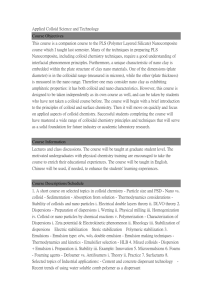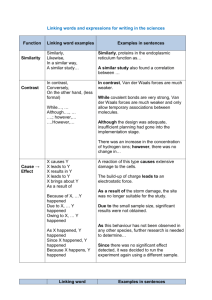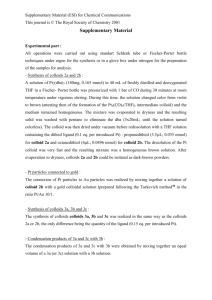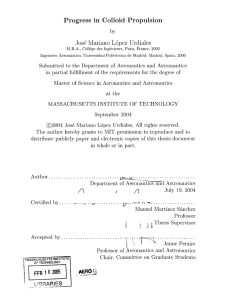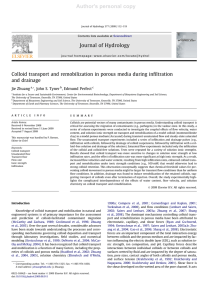Electronic Supplementary Material Probing trace levels of prometryn
advertisement
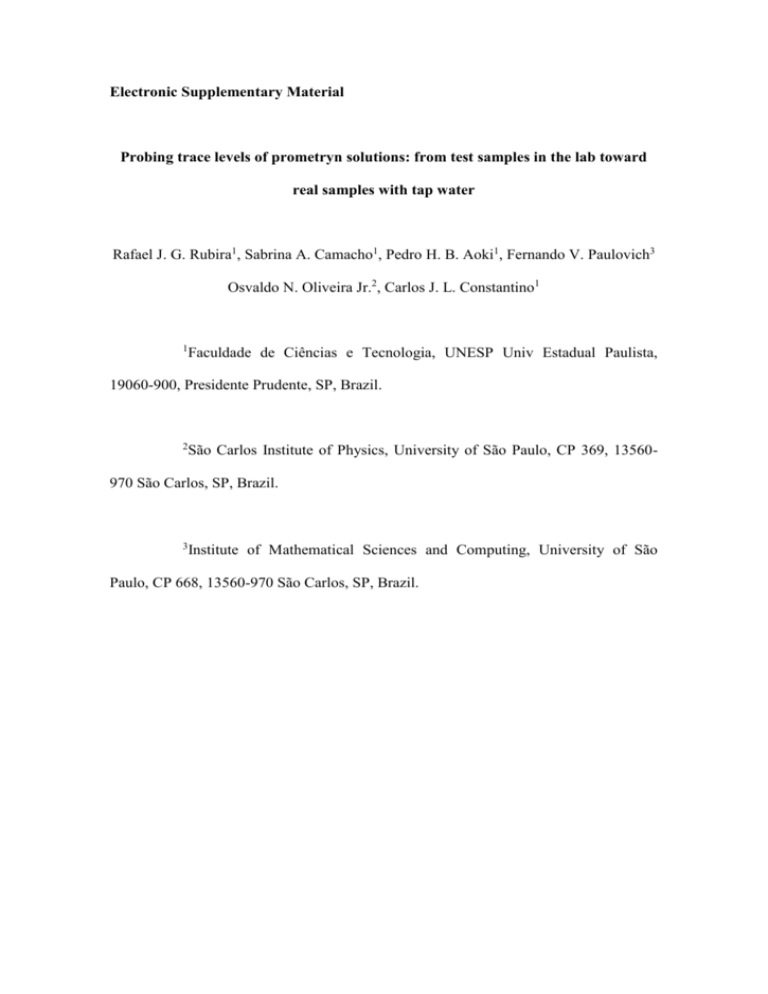
Electronic Supplementary Material Probing trace levels of prometryn solutions: from test samples in the lab toward real samples with tap water Rafael J. G. Rubira1, Sabrina A. Camacho1, Pedro H. B. Aoki1, Fernando V. Paulovich3 Osvaldo N. Oliveira Jr.2, Carlos J. L. Constantino1 1 Faculdade de Ciências e Tecnologia, UNESP Univ Estadual Paulista, 19060-900, Presidente Prudente, SP, Brazil. 2 São Carlos Institute of Physics, University of São Paulo, CP 369, 13560- 970 São Carlos, SP, Brazil. 3 Institute of Mathematical Sciences and Computing, University of São Paulo, CP 668, 13560-970 São Carlos, SP, Brazil. Characterization of the Ag colloid synthesized by hydroxylamine reduction The UV-Vis spectrum and a SEM image of the Ag colloid are shown in Figure S1. The maximum plasmon absorption is at 418 nm with a FWHM of approximately 175 nm (fitting with mixed Gaussian+Lorentz). According to Leopold and Lendl,[1] who proposed the method for the synthesis of Ag colloid by hydroxylamine reduction, this UV-Vis result indicates a rather monodisperse size of the silver nanoparticles. Also according to them,[1] the AgNPs synthesized by this method have an average diameter of 34 nm. The SEM image reveals a predominant spherical shape for the AgNPs, which is in agreement with what has been observed by Canamares et al.[2] comparing the characteristic of two different Ag colloids prepared by citrate and hydroxylamine reduction. Additionally, we have found an average value of -27.4 mV for the zeta potential, which is in the range expected for stable colloids.[3-4] According to Saade et al.[4], the colloid stability is confirmed to values lower than -30 mV (ζ ≤ -30mV) or higher than 30 mV (ζ ≥ 30 mV). Figure S1: UV-Vis absorption of the Ag colloid synthesized by hydroxylamine reduction. The maximum plasmon absorption is at 418 nm. The inset shows a SEM image of the Ag colloid dropped onto a solid substrate. Figure S2: SERS spectra for prometryn solutions at 5x10-5 and 5x10-6 mol/L. Figure S3: Raman spectra collected from the Ag colloid itself. Figure S4: Raman spectra collected from the Ag colloid containing (a) deionized and (b) tap water. References [1] Leopold N, Lendl B (2003) A new method for fast preparation of highly surfaceenhanced Raman scattering (SERS) active silver colloids at room temperature by reduction of silver nitrate with hydroxylamine hydrochloride. Journal of Physical Chemistry B 107: 5723-5727. [2] Canamares MV, Garcia-Ramos JV, Gomez-Varga JD, Domingo C, Sanchez-Cortes S (2005) Comparative study of the morphology, aggregation, adherence to glass, and surface-enhanced Raman scattering activity of silver nanoparticles prepared by chemical reduction of Ag+ using citrate and hydroxylamine. Langmuir 21: 8546-8553. [3] Alvarez-Puebla RA, Arceo E, Goulet PJG, Garrido JJ, Aroca RF (2005) Role of nanoparticle surface charge in surface-enhanced Raman scattering. J. Phys. Chem. B 109: 3787-3792. [4] Saade J, de Araujo CB (2014) Synthesis of silver nanoprisms: A photochemical approach using light emission diodes. Mater. Chem. Phys. 148: 1184-1193.


